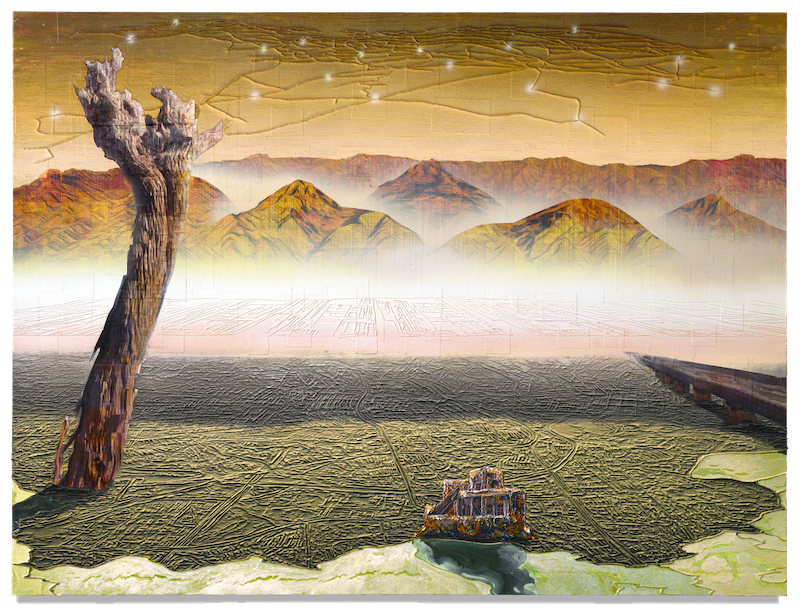Gordon Cheung
Desert of the Real, 2020
Financial Times stock listings, archival inkjet, sand and acrylic on canvas
150 x 200 cm
59 1/8 x 78 3/4 in.
59 1/8 x 78 3/4 in.
Copyright the artist
'Desert of the Real' borrows its title from Jean Baudrillard’s treatise 'Simulacra and Simulation', referring to the Borges fable in which cartographers draw up a map of the Empire that...
'Desert of the Real' borrows its title from Jean Baudrillard’s treatise 'Simulacra and Simulation', referring to the Borges fable in which cartographers draw up a map of the Empire that is so detailed in ends up covering the entire territory it is supposed to map – becoming more real than reality itself. The painting depicts the resource-rich province of Xianjiang, the largest administrative region of north-western China, and the subject of recent attention on account of the Chinese administration’s treatment of the Uighur Muslim minority. Xianjiang will be the busiest intersection of the Belt and Road initiative as it borders eight nations – borders that are depicted in the lower section of the painting in hardened sand. The Uighur Muslims’ separatist ambitions (leading to terrorist attacks) were supressed by Beijing, most recently in the form of the most advanced technological surveillance panopticons the world has ever seen – algorithmic machine learning face recognition apparatus, alongside collection of DNA and fingerprints to create a complete map of human movement, where ‘suspicious behaviour’ is defined as anything mathematically breaking with ordinariness. In the mid-section of the painting we see the region’s controversial “re-education camps”, which at one point housed a million Uighurs. In the sky, the high speed rail network is mapped – a biproduct of which has been the internal colonisation of the region by an influx of Han Chinese, diluting the Uighur majority. The golden palette evokes the diffused light in a desert storm, or perhaps the afterglow of air pollution.

